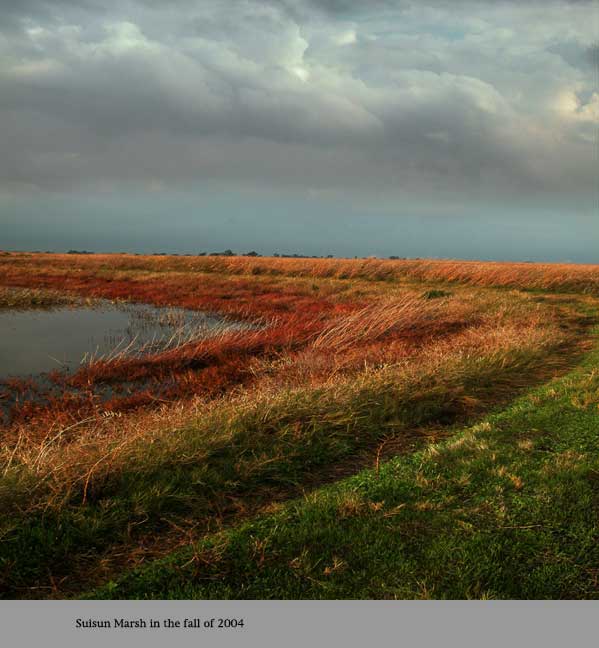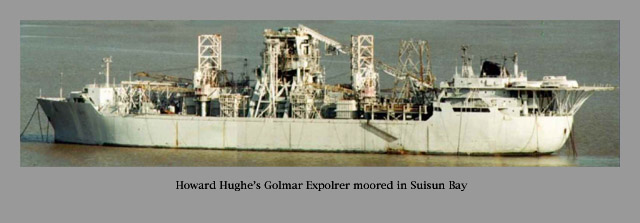SUISUN MARSH, SUISUN BAY AND THE NATIONAL RESERVE FLEET Past, Present and Future Photo Galleries |
||
Suisun Bay and Suisun Marsh were named after the indigenous peoples who lived off the land of the Green Valley, Rockville hills, Suisun Valley, and the Suisun Marsh. There are historical claims that these people were named the Suisuni by the first Spanish Missionaries inhabiting Northern California. The people of the Suisun Marsh are also sometimes referred to specifically as the Patwin, a name they perhaps called themselves. The Patwin nation, whose main village was by the Rockville hills, had two smaller villages near the fertile marsh. One village was near present day Rush Ranch. The other, called Mesaia, was close to present day Suisun City. These people lived in thatch huts and speared fish from canoes made from the Tule grasses found in the marsh. (see map of historical environment circal 1770)
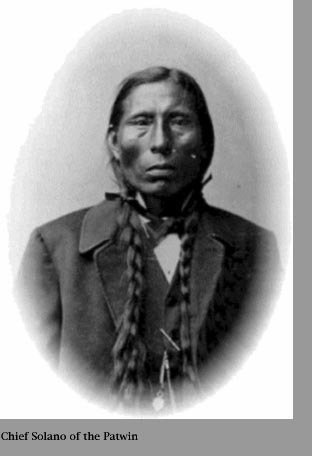 By the mid-1700's the Spanish had made their presence known in this area
of California. Near the confluence of the San Joaquin and Sacramento Rivers
they found Suisun Bay, surrounded by a marsh rich with mineral deposits
created by the interplay of tidal waters and the delta outflow of the
Sacramento River and small drainage streams. The estuary cycle of growth
and decay of plant life have lead to the addition of organic material,
creating a vast marsh of 68,000 acres, that is still to this day a natural
habitat for local and migratory birds, bass and giant bottom feeding sturgeon.
By the mid-1700's the Spanish had made their presence known in this area
of California. Near the confluence of the San Joaquin and Sacramento Rivers
they found Suisun Bay, surrounded by a marsh rich with mineral deposits
created by the interplay of tidal waters and the delta outflow of the
Sacramento River and small drainage streams. The estuary cycle of growth
and decay of plant life have lead to the addition of organic material,
creating a vast marsh of 68,000 acres, that is still to this day a natural
habitat for local and migratory birds, bass and giant bottom feeding sturgeon.
General Mariano Guadalupe Vallejo was sent to settle this fertile marsh. During a skirmish with the native inhabitants he ended
up with the responsibility of a nine year old named Sem Yeto (‘Brave
or Fierce Hand’). In1810 he took Sem Yeto to the Mission Dolores in San Francisco
where he was baptized Francisco Solano after Saint Francis Solano
a prominent missionary in South America in the late 1500's. In the early 1830's General Vallejo named him Chief Solano of the Patwin.
This proclamation lead to fierce fighting. Eventually
the Christians won due mostly to better weapons and the
decimation of the native peoples by a small pox epidemic that raged from 1835-1837.
Chief Solano himself died from smallpox.
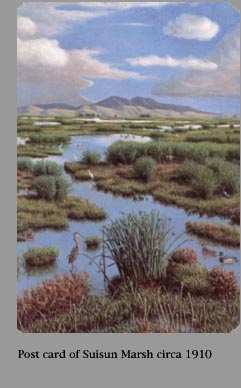 In
1800 about 2,300 Patwin Native Americans where recorded by missionaries
in present day Solano County. But when Father Jose Altimira, was sent
to found the Mission in Sonoma in 1823, he found no Patwins left.
In
1800 about 2,300 Patwin Native Americans where recorded by missionaries
in present day Solano County. But when Father Jose Altimira, was sent
to found the Mission in Sonoma in 1823, he found no Patwins left.
When California was made a State in 1850, Solano County was one of the original counties. The bay and marsh began to change in the 1860s when diking was installed to drain land for pasturing livestock and when duck hunting became popular. By the beginning of the 20th century livestock was being replaced by agriculture. Farming the marsh failed due to increased salinity and land subsidence. Because of these uses and some more recent commercial mixed use developments only 6,300 acres of tidal wetlands remain today. Duck hunters and environmentalists are unlikely partners in efforts to preserve what is left of the marsh.
In the mid-1800's one of the oldest naval detachments in the Pacific was set up near the North Western edge of Suisun Bay on Mare Island. This ammunition and Naval shipyard named Concord was expanded in 1942 to the southern shore of Suisun Bay. During World War II the township of Port Chicago was created where the railway came close to the Bay. Many of Port Chicago's townspeople were employed loading ships with munitions for the war in the Pacific.
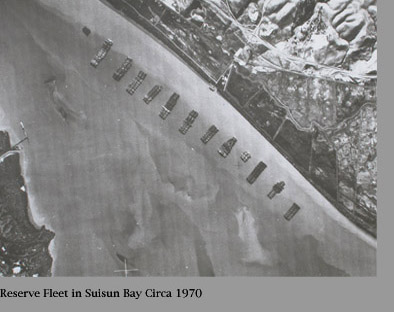 Suisun
Bay is now used to moor the National Defense Reserve Fleet, often referred
to as the ‘Mothball Navy’. Up to 500 naval support vessels
have been moored there at one time, in various states of readiness for
military or humanitarian missions. Ships stored in Suisun Bay have been
used in military actions as recently as the Gulf War in 1991. About 100
vessels are stored at there present. Some of these vessels date back to
WW II and are in such disrepair that they are unlikely to ever be recommissioned.
Suisun
Bay is now used to moor the National Defense Reserve Fleet, often referred
to as the ‘Mothball Navy’. Up to 500 naval support vessels
have been moored there at one time, in various states of readiness for
military or humanitarian missions. Ships stored in Suisun Bay have been
used in military actions as recently as the Gulf War in 1991. About 100
vessels are stored at there present. Some of these vessels date back to
WW II and are in such disrepair that they are unlikely to ever be recommissioned.
Several famous vessels have been moored in Suisun Bay. Perhaps one of the most famous vessels was the Glomar Explorer. In 1968 a Soviet Sub sank off of Hawaii. Under the guise of Howard Huges searching for oil, the Glomar Explorer, a drilling ship was used by the CIA to secretly raise part of the sub. She was moored in Suisun Bay for 20 years (except for a brief time when she was leased out for private exploration) until she was refitted for private use in 1997.
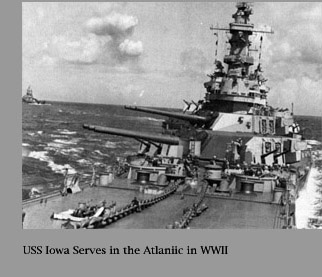 The
most famous ship presently moored at Suisun Bay is the USS Iowa (BB-61),
the lead ship of her class of dreadnought battleships. For a compliment
of 151 officers and 2637 enlisted men she was launched in New York on
August 27th 1942 to serve in the Atlantic. In the Fall of 1943 she carried
Franklin Roosevelt to Casablanca as the first part of his trip to the
Teheran Conference with Churchill and Stalin. After the surrender of the
Germans she fought in the Pacific and entered Tokyo harbor with the occupation
forces on the 29th of August 1945.
The
most famous ship presently moored at Suisun Bay is the USS Iowa (BB-61),
the lead ship of her class of dreadnought battleships. For a compliment
of 151 officers and 2637 enlisted men she was launched in New York on
August 27th 1942 to serve in the Atlantic. In the Fall of 1943 she carried
Franklin Roosevelt to Casablanca as the first part of his trip to the
Teheran Conference with Churchill and Stalin. After the surrender of the
Germans she fought in the Pacific and entered Tokyo harbor with the occupation
forces on the 29th of August 1945.
She was decommissioned in 1949 only to be recommissoned for the Korean war where she aided ground troops by bombarding Songjin, Hungnam and Kojo. Once again she was decommissioned only to be recommissoned and modernized 25 years later as part of Ronald Regan’s military buildup. She was finally decommissioned in 1990 and now lies in moorage in Suisun Bay as part of the reserve fleet where she is visited by monthly tour boats of veterans and interested tourists. There is a campaign to berth her in San Francisco as an extension of the Maritime museum.
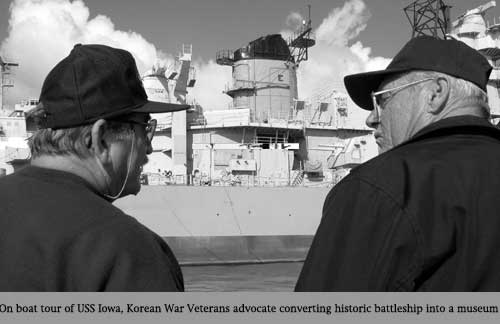
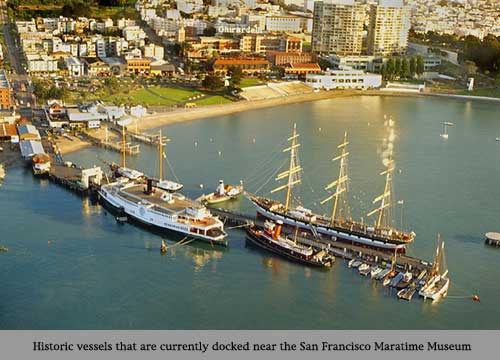 .
.
Many of these decaying vessels still contain bunker fuel, environmental officials are concerned for the surrounding natural environment. The private company maintaining the fleet is prepared for oil spills but there is a discussion about avoiding environmental contamination by wrapping the hulls of some of these vessels in, what for all practical purposes, is saran wrap.
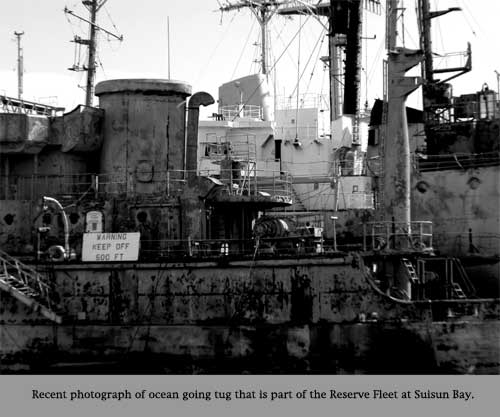
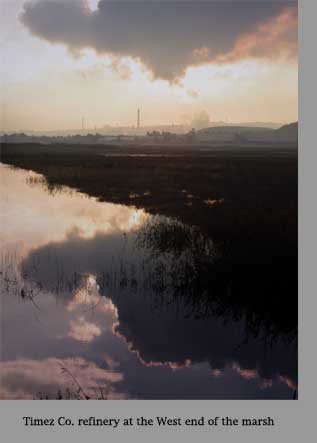 What
might be of a greater threat to the natural condition of these wetlands
are the influences of the Bay Area metropolis and the encroaching pressures
of economic development. To the southwest an industrial area, whose major
presence is the Timez Co. refinery, slowly drains more land for development.
What
might be of a greater threat to the natural condition of these wetlands
are the influences of the Bay Area metropolis and the encroaching pressures
of economic development. To the southwest an industrial area, whose major
presence is the Timez Co. refinery, slowly drains more land for development.
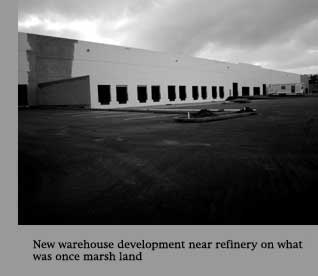
Recently there has been a renewed interest in the bay and marsh for environmental and recreational reasons especially for duck hunting and fishing. Hunters and environmentalists are dedicated advocates for preserving the wetlands for future generations.
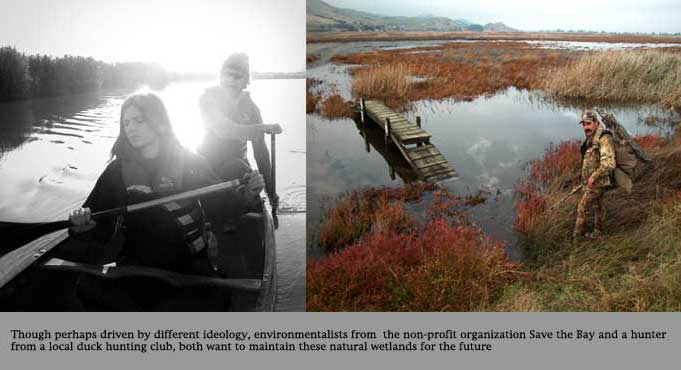
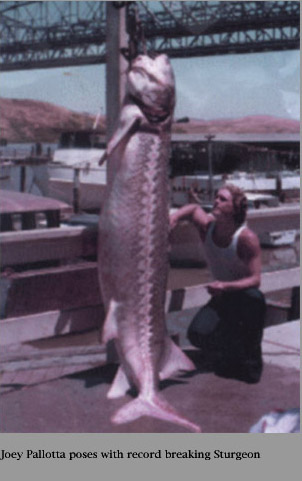 Large
‘Diamond Back’ White Sturgeon are found on the West Coast
from California to British Columbia. Eight record breaking sturgeon have
been caught in Suisun Bay. In 1983 Joey Pallotta topped the record with
a 9 foot 6 inch ‘Diamond Back’ White Sturgeon weighing in
at 468 pounds. Joey Pallotta notes, "The best thing about the record
was the chance it gave me to become a party boat skipper and get paid
to spend my weekends and time off out on the water."
Large
‘Diamond Back’ White Sturgeon are found on the West Coast
from California to British Columbia. Eight record breaking sturgeon have
been caught in Suisun Bay. In 1983 Joey Pallotta topped the record with
a 9 foot 6 inch ‘Diamond Back’ White Sturgeon weighing in
at 468 pounds. Joey Pallotta notes, "The best thing about the record
was the chance it gave me to become a party boat skipper and get paid
to spend my weekends and time off out on the water."
In recent years sportsmen and environmentalist have come to terms that will help preserve this delicate natural environment for generations to come. Duck hunters are only allowed to shoot and kill ducks using lead-free shot. Adult sturgeons must be released when caught.
Because of increased public concern, in 1978, Suisun Marsh was recognized as an endangered brackish water marsh and environmental standards were set. (see map of environment today) Despite the encroaching industry to the West, the remaing marsh will likely be protected from development.
- Erik Whittaker ewhitt@berkeley.edu
